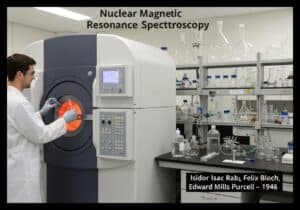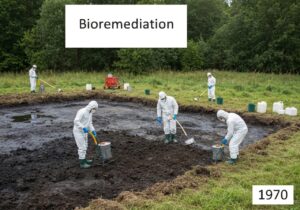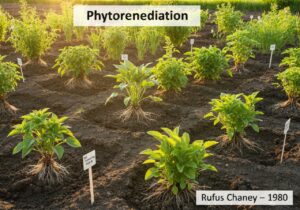这是我们最新精选的以生物多样性为主题的全球出版物和专利,涉及许多科学在线期刊,分类并侧重于生物多样性、物种多样性、生态系统多样性、遗传多样性、营养级、关键物种、生物地理学、特有性、可持续发展、入侵物种、生物群落、非生物因素、生态位和生物因素。
Fusing Foot and Leg Characteristics for Personalised Shoe Recommendation
Published on 2025-10-21 by Haoyu Zhang, Xiaoying Li @MDPI
Abstract: (1) This study aims to enhance the precision of ergonomic fitting in traditional shoe size selection by integrating literature and measured biometric data. (2) A correlation table between biometric features and shoe models was established, which was then embedded into a knowledge graph (KG) for visual, accurate recommendations. The experiment employed pressure sensors and depth cameras to collect biometric data from the foot and leg, evaluating the consistency of the system’s recom[...]
Our summary: This study integrates biometric data with shoe models to enhance ergonomic fitting. A knowledge graph was developed for precise recommendations based on collected data. Results show significant improvements in user satisfaction and stability over traditional size-based systems.
biometric data, shoe recommendation, knowledge graph, ergonomic fitting
Publication
How Artificial Sweeteners Rewire Microbiota and Reward Pathways
Published on 2025-10-21 by Roberto Coccurello @MDPI
Abstract: Artificial sweeteners, or non-caloric sweeteners (NCSs), are widely consumed as sugar substitutes to reduce energy intake and manage obesity. Once considered inert, accumulating evidence now shows that NCSs interact with host physiology, altering gut microbiota composition and neural circuits that regulate feeding. This review synthesizes current knowledge on how NCSs disrupt the gut–brain axis (GBA), with particular focus on microbiota-mediated effects and neural reward processing[...]
Our summary: Artificial sweeteners disrupt gut microbiota and neural circuits regulating feeding. They reduce beneficial microbes and impair gut barrier integrity, promoting systemic inflammation. This leads to altered reward processing and increased vulnerability to overeating.
Microbiota, Artificial Sweeteners, Gut-Brain Axis, Reward Pathways
Publication
Fabrication and Dielectric Characterization of Stable Oil in Gelatin Breast Tissue Phantoms for Microwave Biomedical Imaging
Published on 2025-10-21 by Héctor López-Calderón, Víctor Velázquez-Martínez, Celia Calderón-Ramón, Juan Rodrigo Laguna-Camacho, Benoit Roger-Fouconnier, Jaime Martínez-Castillo, Enrique López-Calderón, Javier Calderón-Sánchez, Jorge Chagoya-Ramírez, Armando Aguilar-Meléndez @MDPI
Abstract: Breast tissue-mimicking phantoms are essential tools for validating microwave imaging systems designed for early breast cancer detection. In this work, we report the fabrication and comprehensive characterization of oil-in-gelatin phantoms emulating normal, benign, and malignant breast tissues. The phantoms were manufactured with controlled mixtures of kerosene, safflower oil, and gelatin, and their dielectric properties were experimentally evaluated using a free-space transmission method with a[...]
Our summary: This study presents the fabrication and characterization of oil-in-gelatin phantoms that mimic breast tissues for microwave imaging applications. The dielectric properties of these phantoms were evaluated across a wide frequency range, showing significant differences among tissue types. The phantoms demonstrated long-term stability, making them suitable for validating microwave-based breast cancer detection systems.
Dielectric characterization, Microwave imaging, Breast tissue phantoms, Oil-in-gelatin
Publication
The Molecular Interplay Between Oral Microbiome and Oral Cancer Pathogenesis
Published on 2025-10-21 by Roxana-Nicoleta Urzică, Brigitte Crețu, Ana Căruntu, Săndica Bucurica, Alexandru-Titus Farcasiu, Laurențiu Mihai Ciupescu, Cristian Scheau, Constantin Căruntu @MDPI
Abstract: The oral microbiome plays a key role in oral cancer pathogenesis through mechanisms such as chronic inflammation, dysregulated proliferation, and increased tumor invasiveness. Dysbiosis, frequently present in premalignant and malignant lesions, may initiate or accelerate malignant transformation. Oral squamous cell carcinoma (OSCC), representing over 90% of oral cancers and affecting more than 350,000 people worldwide each year, is strongly linked to microbial shifts. Common periodontal pathogen[...]
Our summary: The oral microbiome influences oral cancer pathogenesis through mechanisms like chronic inflammation and dysregulated cell proliferation. Dysbiosis in the oral cavity is linked to the development of oral squamous cell carcinoma (OSCC) and is associated with specific pathogenic bacteria. Innovative therapies targeting the microbiome may enhance treatment efficacy and patient outcomes in oral cancer.
Microbiome, Oral Cancer, Tumorigenesis, Dysbiosis
Publication
Design and Prototyping
Published on 2025-10-21 by David Díaz-Jiménez, José L. López López Ruiz, Juan Carlos Cuevas-Martínez, Joaquín Torres-Sospedra, Enrique A. Navarro, Macarena Espinilla Espinilla Estévez @MDPI
Abstract: This work presents the design and prototyping of two reconfigurable BLE-based devices developed to overcome the limitations of commercial platforms in terms of configurability, data transparency, and energy efficiency. The first is a wearable smart wristband integrating inertial and biometric sensors, while the second is a configurable beacon (ASIA Beacon) able to dynamically adjust key transmission parameters such as channel selection and power level. Both devices were engineered with energy-aw[...]
Our summary: This work presents the design and prototyping of two BLE-based devices aimed at enhancing configurability and energy efficiency. The devices include a wearable smart wristband and a configurable beacon, both engineered for optimal performance in residential environments. Initial experiments show significant improvements in stability, autonomy, and data exchange reliability, indicating their potential for ambient assisted living applications.
BLE, reconfigurable devices, energy efficiency, IoT
Publication
Characterization of Recombinant Human Type II Collagen from CHO Cells, Functional Assessment of Chondrocytes and Alleviation of Cartilage Degeneration
Published on 2025-10-21 by Chuan Wang, Zhijie Zhang, Zhengqi Zha, Chunyang Lu, Hang Wang, Long Yue, Hongping Yin @MDPI
Abstract: Type II collagen (Col2), a crucial structural protein in hyaline cartilage, is essential for cartilage integrity and facilitating injury repair. However, research on recombinant type II collagen still faces many challenges, such as structure and yield, which limit the application of recombinant Col2 in biomedical fields. In this study, we achieved high-yield expression of full-length human Col2 (rhCol2) in CHO cells. The physical and chemical properties of rhCol2 were very close to native Col2, [...]
Our summary: This study achieved high-yield expression of full-length recombinant human type II collagen (rhCol2) in CHO cells. The properties of rhCol2 closely matched native collagen, promoting chondrocyte proliferation and cartilage-specific gene expression. In a cartilage defect model, rhCol2 significantly enhanced repair, indicating its potential as a biomaterial for cartilage regeneration.
Recombinant collagen, CHO cells, cartilage repair, chondrocytes
Publication
Engineering native e. coli for tumor imaging under hypoxia conditions
Patent published on the 2025-10-16 in WO under Ref WO2025217633 by UNIV OF FLORIDA RESEARCH FOUNDATION INCORPORATED [US] (Ding Yousong [us], Liu Dake [us])
Abstract: Escherichia coli is a widely studied model organism and an integral component of the human gut microbiome, offering significant potential for bacteria-based therapeutic applications. However, engineering native E. coli strains poses persistent challenges. In this study, the chassis- independent recombinase-assisted genome engineering technique was leveraged to engineer the native gut strain E. coli EcAZ-1 and the probiotic strain E. coli Nissle 1917 (EcN). The bioluminescent lux operon, green fl[...]
Our summary: This study engineered native E. coli strains for tumor imaging under hypoxia. The bioluminescent lux operon and fluorescent proteins were introduced to enhance imaging capabilities. Engineered strains also biosynthesize bioactive compounds, showcasing their potential in synthetic biology and therapeutics.
E. coli, tumor imaging, genome engineering, fluorescence
Patent
Responsive nanomicelle for enhancing deep penetration of tumours, and preparation method and application thereof
Patent published on the 2025-10-06 in NL under Ref NL2039968 by AFFILIATED WOMENS HOSPITAL OF JIANGNAN UNIV [CN] (Rui Yang [cn], Mudan Lu [cn], Guoshuang Shen [cn], Daozhen Chen [cn], Zhen Jia [cn], Yaqi Li [cn], Jiuda Zhao [cn], Fengxian Qi [cn], Yanmei Zhu [cn])
Abstract: The invention discloses a responsive nanomicelle for enhancing deep penetration of tumours, and preparation method and application thereof, and belongs to the technical field of biomedicine. The nanomicelle is obtained by co-assembly of gambogic acid and nano materials. The preparation method includes the following steps: dissolving the nano-material and gambogic acid in DIVISO, preparing a mixed solution after ultrasonic vibration, then dropwise adding the mixed solution into ultrapure water at[...]
Our summary: The invention presents a responsive nanomicelle designed to enhance deep tumor penetration. It is prepared through the co-assembly of gambogic acid and nano materials using a straightforward method. The application of this nanomicelle includes the development of anti-tumor medicines with a focus on safe drug release within tumors.
Nanomicelle, Tumor Penetration, Gambogic Acid, Biomedicine
Patent
























